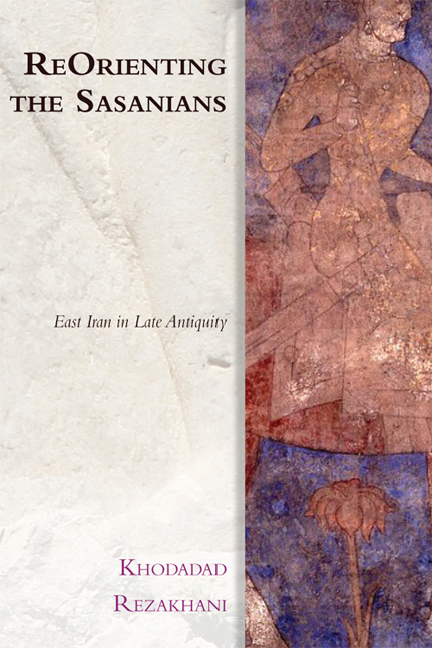Book contents
- Frontmatter
- Contents
- List of Illustrations
- Acknowledgements
- Series Editor's Preface
- Maps
- Preface
- Introduction
- 1 The Sasanians and the Sistanis
- 2 The Kushans and the Sasanians
- 3 The Kushano-Sasanians in East Iran
- 4 The Iranian Huns and the Kidarites
- 5 The Alkhans in the Southern Hindu Kush
- 6 The Hephthalite ‘Empire’ and its Successors
- 7 Sogdiana in the Kidarite and Hephthalite Periods
- 8 The Nēzak and Turk Periods
- 9 Tokharistan and Sogdiana in the Late Sasanian Period
- 10 General Conclusions and Postscript
- 11 Epilogue and Excursus on the Shahnameh
- Bibliography
- Index
9 - Tokharistan and Sogdiana in the Late Sasanian Period
Published online by Cambridge University Press: 07 December 2017
- Frontmatter
- Contents
- List of Illustrations
- Acknowledgements
- Series Editor's Preface
- Maps
- Preface
- Introduction
- 1 The Sasanians and the Sistanis
- 2 The Kushans and the Sasanians
- 3 The Kushano-Sasanians in East Iran
- 4 The Iranian Huns and the Kidarites
- 5 The Alkhans in the Southern Hindu Kush
- 6 The Hephthalite ‘Empire’ and its Successors
- 7 Sogdiana in the Kidarite and Hephthalite Periods
- 8 The Nēzak and Turk Periods
- 9 Tokharistan and Sogdiana in the Late Sasanian Period
- 10 General Conclusions and Postscript
- 11 Epilogue and Excursus on the Shahnameh
- Bibliography
- Index
Summary
INTRODUCTION
Following the division of the territories of the Hephthalites between the Turks and the Sasanians, the region to the south of the Oxus, Tokharistan, seems to have fallen to the Sasanians (Harmatta 1999: 359–60). However, this does not seem to be a period of prosperity in this area. Xuanzang describes Balkh, the ancient capital of the region, as follows: ‘This city, though well [strongly] fortified, is thinly populated’ (quoted in Litvinsky 1999: 152), although it did possess the important Buddhist monastery of Nau-bihar (Litvinsky and Safi 1999: 182). Bactria, ‘the Land of a Thousand Cities’ (Leriche 2007), was in decline, and lost most of its importance to Kapis´a/Gandhara (Harmatta 1999: 362), and probably to Sogdiana (see de la Vaissière 2005b: 199ff.). Archaeological excavations barely show a town in the Termez regions between the fifth and seventh centuries, and Chaghanian, the important Hephthalite territory, could boast only a very limited area (Litvinsky 1999: 152–3).
Sasanian control of the former Hephthalite imperial domains appears to have lasted only a few decades following the Battle of Gol-Zarriūn and the destruction of the Hephthalite Empire in ad 560. The most widely discovered coins in the region are the issues of Hormizd IV (579–90) and Wahram VI (591–2). Coins of year 11 of Hormizd IV – that is, his final year – appear to have been the most imitated. Hormizd himself issued coins in Khulm (mint signature hlm), as well as in Samarkand (sml) in his years 3–5 (ad 582–4) and in Čāč/Šā š (č’č) in his year 6, ad 585 (Vondrovec 2014: 525). This must have been the northernmost extent of Sasanian power, extending beyond the Syr Darya/Jaxartes.
Among all the Sasanian rulers, it is Wahram VI whose associations and physical presence in this region and in the context of his relations with the Western Turks we know best. The Samanid historian and vizier Abu-Ali Bal‘ami presents a complete résumé of the career of Wahram VI in his partial translation of al-Tabari's universal history (Bal‘ami 1386: 938–49).
- Type
- Chapter
- Information
- ReOrienting the SasaniansEast Iran in Late Antiquity, pp. 176 - 184Publisher: Edinburgh University PressPrint publication year: 2017



